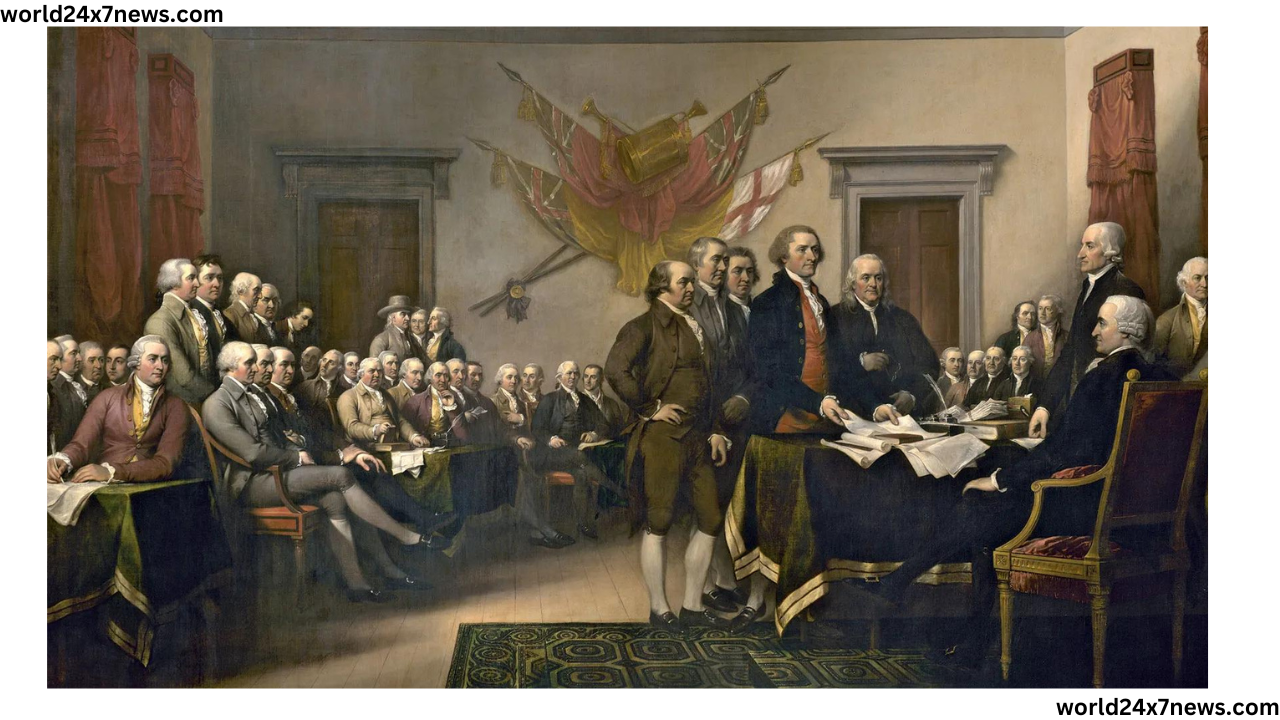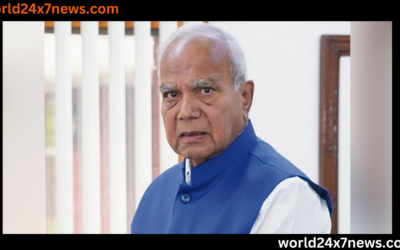The Declaration of Independence: America’s Founding Document

Introduction
The Declaration of Independence stands as a monumental testament to the American colonies’ resolve to break free from British rule. This seminal document, drafted in 1776, laid the groundwork for the birth of the United States of America. Its significance extends beyond its historical context, influencing democratic movements worldwide and continuing to resonate in contemporary political discourse.
Historical Context
In the mid-18th century, the American colonies were subjected to British imperial rule, characterized by stringent regulations and heavy taxation. The Stamp Act of 1765, the Townshend Acts of 1767, and the Intolerable Acts of 1774 exacerbated tensions, leading to growing unrest and the desire for autonomy. The colonies sought to assert their rights and resist the overreach of British authority, setting the stage for a revolutionary movement.
Key Figures
Central to the creation of the Declaration was Thomas Jefferson, a young and eloquent statesman from Virginia. Tasked with drafting the document, Jefferson drew on his extensive knowledge of political philosophy. Supporting him were other members of the Continental Congress, including John Adams, Benjamin Franklin, Roger Sherman, and Robert R. Livingston, who contributed to refining the draft.
Drafting the Declaration
Jefferson’s drafting process began in June 1776. He composed the initial draft at his lodgings in Philadelphia, meticulously crafting a document that articulated the colonies’ grievances and aspirations. The draft underwent several revisions, with input from Adams, Franklin, and other members of the drafting committee. The Continental Congress debated and amended the text before reaching a consensus.
Structure and Content
The Declaration of Independence is divided into several distinct sections:
- Preamble: This introduction sets the philosophical tone, asserting the necessity of explaining the reasons for separation.
- Declaration of Natural Rights: Drawing on Enlightenment principles, this section outlines the inherent rights of individuals, including life, liberty, and the pursuit of happiness.
- List of Grievances: A detailed enumeration of the colonies’ complaints against King George III, highlighting the injustices and tyrannies imposed by British rule.
- Resolution of Independence: The concluding section declares the colonies’ intent to dissolve their political ties with Britain and establish themselves as free and independent states.
Philosophical Foundations
The Declaration is deeply rooted in Enlightenment thought, particularly the ideas of John Locke. Locke’s theories on natural rights and the social contract profoundly influenced Jefferson’s writing. The assertion that government derives its power from the consent of the governed and exists to protect the rights of the people is a central tenet of the Declaration.
Adoption and Signing
The Second Continental Congress adopted the Declaration on July 4, 1776, a date now celebrated as Independence Day in the United States. The final document was signed by 56 delegates from the 13 colonies, symbolizing their unanimous commitment to the cause of independence.
Immediate Impact
The Declaration galvanized support for the American Revolution, rallying colonists to the cause of liberty. It was read aloud in public squares, printed in newspapers, and distributed widely. The British government, however, dismissed it as an illegal and treasonous act, further entrenching the conflict.
Long-term Significance
The principles enshrined in the Declaration of Independence had a profound impact on the formation of the American government. They influenced the drafting of the Constitution and the Bill of Rights, embedding the values of liberty, equality, and democracy in the nation’s foundation. Moreover, the Declaration has inspired numerous movements for civil rights and social justice.
Global Influence
The Declaration’s impact extended far beyond the United States. It served as a beacon for other nations seeking self-determination and democratic governance. Revolutionary movements in France, Latin America, and beyond drew inspiration from its assertions of individual rights and the legitimacy of rebellion against oppressive rule.
Preservation and Legacy
The original Declaration of Independence is housed at the National Archives in Washington, D.C. Its preservation is a testament to its enduring significance. Annual celebrations on July 4th commemorate the signing of the Declaration, highlighting its pivotal role in American history.
Criticisms and Controversies
Despite its lofty ideals, the Declaration has faced criticism for its exclusionary aspects. Notably, it did not address the issue of slavery, a glaring omission given the prevalence of the institution in the colonies. The failure to extend its promises of liberty and equality to enslaved people and women reflects the complexities and contradictions of its time.
Modern Relevance
Today, the Declaration of Independence remains a powerful symbol of the quest for freedom and justice. Its language and principles are frequently invoked in contemporary political debates, underscoring its continued relevance. The document serves as a reminder of the ongoing struggle to achieve the ideals it espouses.
Conclusion
The Declaration of Independence is more than a historical artifact; it is a living document that continues to inspire and challenge. Its articulation of the fundamental rights and freedoms of individuals laid the groundwork for the United States and influenced countless movements worldwide. As we reflect on its legacy, we are reminded of the enduring power of its message and the ongoing work required to fulfill its promise.
FAQs
Who wrote the Declaration of Independence?
The primary author of the Declaration of Independence was Thomas Jefferson, with contributions and revisions from John Adams, Benjamin Franklin, Roger Sherman, and Robert R. Livingston.
Why was the Declaration of Independence written?
The Declaration of Independence was written to articulate the American colonies’ reasons for seeking independence from British rule and to assert their right to self-governance.
What are the main ideas of the Declaration of Independence?
The main ideas include the assertion of natural rights (life, liberty, and the pursuit of happiness), the principle that government derives its power from the consent of the governed, and the right of the people to overthrow a government that violates their rights.
How did the Declaration of Independence impact the world?
The Declaration influenced numerous democratic movements worldwide, serving as a model for other nations seeking independence and self-governance. Its principles of individual rights and government accountability continue to inspire global aspirations for democracy and justice.
Where is the original Declaration of Independence housed?
The original Declaration of Independence is housed at the National Archives in Washington, D.C., where it is preserved and displayed for public viewing.















